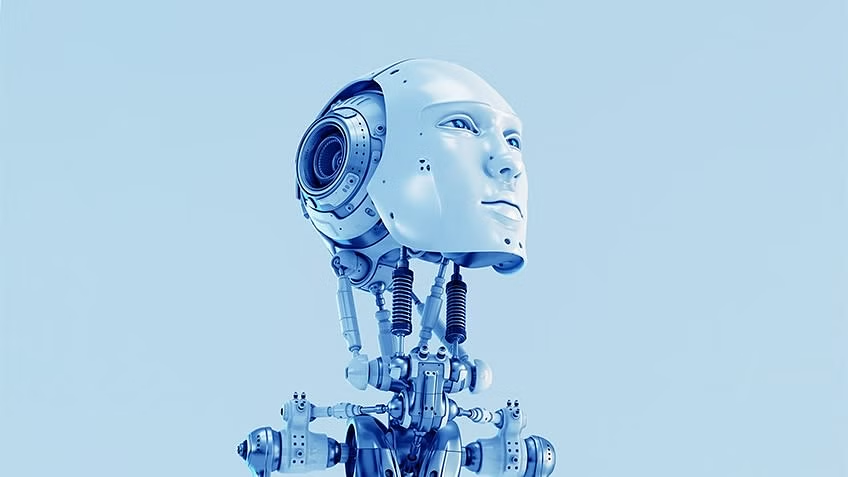
Artificial intelligence, particularly language models like ChatGPT, is revolutionizing industries by offering unprecedented levels of automation, personalization, and efficiency. Web development and branding are no exceptions, with AI reshaping how businesses interact with audiences and streamline their workflows. However, while the benefits are undeniable, challenges must be addressed to ensure that AI complements rather than complicates these fields.
Exploring the Advantages of AI Integration
AI’s ability to process and analyze vast amounts of data has made it invaluable in creating and maintaining websites and building compelling brands. For example, language models like ChatGPT can generate polished, engaging content in seconds, a game-changer for companies aiming to maintain a consistent online presence. This can include anything from blog posts to product descriptions, ensuring businesses stay relevant and competitive in the digital landscape.
Another significant benefit is personalization. AI allows websites to adapt dynamically to individual user preferences, offering tailored recommendations or custom experiences based on browsing history or behavior. This level of personalization not only engages users more effectively but also drives conversions, building stronger relationships with customers.
Customer support has also seen dramatic improvements thanks to AI-driven chatbots. These tools can handle basic inquiries, guide users through troubleshooting steps, or even assist with purchases—all available around the clock. Businesses save time and resources by delegating repetitive tasks to AI, while customers benefit from faster responses and uninterrupted support.
In the development space, AI has streamlined coding and debugging processes. Developers now have tools that suggest code snippets, identify errors, and even optimize existing code for better performance. The result is faster development cycles, reduced human error, and more polished final products.
Beyond these specific applications, AI offers scalability. Businesses can grow without needing to proportionally increase their workforce by leveraging AI for repetitive or high-volume tasks. This scalability can be a crucial advantage, particularly for small to medium-sized enterprises aiming to expand their reach.
Recognizing the Challenges of AI Implementation
Despite its many strengths, AI has limitations that businesses must acknowledge. One of the most significant is the lack of genuine human touch in AI-generated interactions. While AI can produce language that feels conversational, it lacks emotional depth and the ability to fully comprehend nuances. For instance, a chatbot might misinterpret a complex customer concern, leading to frustration and dissatisfaction.
Another challenge lies in the dependency on quality data. AI systems require accurate, up-to-date information to perform effectively. When the data feeding the AI is biased, incomplete, or outdated, it can lead to errors or skewed results. For example, poorly trained AI might create inappropriate recommendations or fail to align with a brand’s tone.
The ethical implications of AI usage are another concern. Many AI applications rely on user data, raising questions about privacy and compliance with regulations such as GDPR or CCPA. Businesses must navigate these legal frameworks carefully, ensuring transparency in data collection and use.
Cost and complexity can also deter some businesses from adopting AI. While AI tools are becoming more accessible, initial implementation often requires technical expertise and investment. This can be daunting for smaller organizations with limited budgets.
Lastly, AI has creative limitations. It excels at replicating existing patterns but struggles to produce innovative or groundbreaking ideas. This can be particularly problematic in branding, where standing out often requires out-of-the-box thinking. Over-reliance on AI for creative tasks can result in content that feels generic or uninspired.
Balancing Automation and Human Expertise
To maximize the benefits of AI without falling into its pitfalls, businesses must strike a balance between automation and human oversight. While AI can handle repetitive tasks and streamline workflows, it should not replace the human element that makes a brand relatable and trustworthy.
For instance, AI can draft initial content, but human editors should refine and personalize it to ensure it aligns with the brand’s voice. Similarly, AI-driven chatbots can address common customer queries, but escalation to human agents should always be an option for complex or sensitive issues.
Data quality is another critical area where human involvement is essential. Regular audits of the data used to train AI models can prevent inaccuracies and biases from undermining performance. Businesses must also communicate clearly with users about how their data is collected and used, fostering trust and compliance with privacy regulations.
When it comes to creative tasks, AI can serve as a helpful tool for brainstorming or generating ideas, but human creativity is irreplaceable. Designers, writers, and developers should view AI as a partner that enhances their capabilities rather than a replacement for their skills.
Real-World Applications of AI in Web Development and Branding
AI’s influence can already be seen across various industries. In e-commerce, for example, many platforms use AI to recommend products based on user preferences, enhancing the shopping experience. Streaming services like Netflix and Spotify employ similar algorithms to keep users engaged with personalized recommendations.
On the development side, tools like GitHub Copilot are empowering programmers by suggesting efficient code snippets or identifying potential errors. This not only saves time but also improves the quality of software being developed.
In branding, companies like Sephora use AI chatbots to provide tailored beauty advice, combining customer interaction with personalized recommendations. These implementations demonstrate how AI can elevate user experiences while streamlining business operations.
Is AI Right for Your Business?
The decision to incorporate AI into web development or branding depends on your specific needs and goals. AI excels in automating repetitive tasks, scaling operations, and analyzing data, making it a powerful tool for many businesses. However, its limitations—such as the lack of emotional intelligence, ethical concerns, and creative constraints—mean it cannot fully replace human expertise.
For businesses exploring AI, starting small is often the best approach. Begin with manageable tools, such as chatbots or analytics platforms, and gradually expand your usage as you become more comfortable with the technology. This incremental approach reduces risk and ensures that AI enhances rather than disrupts your workflows.
At Señor Techie, we specialize in creating digital solutions that combine cutting-edge technology with a human touch. Whether you’re looking to integrate AI into your website or simply need guidance on how to get started, we’re here to help. Contact us today for a free consultation and learn how we can help your business thrive in the digital age.
Psst… A little secret: this blog post was written with the help of AI (yes, like ChatGPT!). Just another way we at Señor Techie showcase how AI can assist in content creation—quick, efficient, and oh-so-handy!
